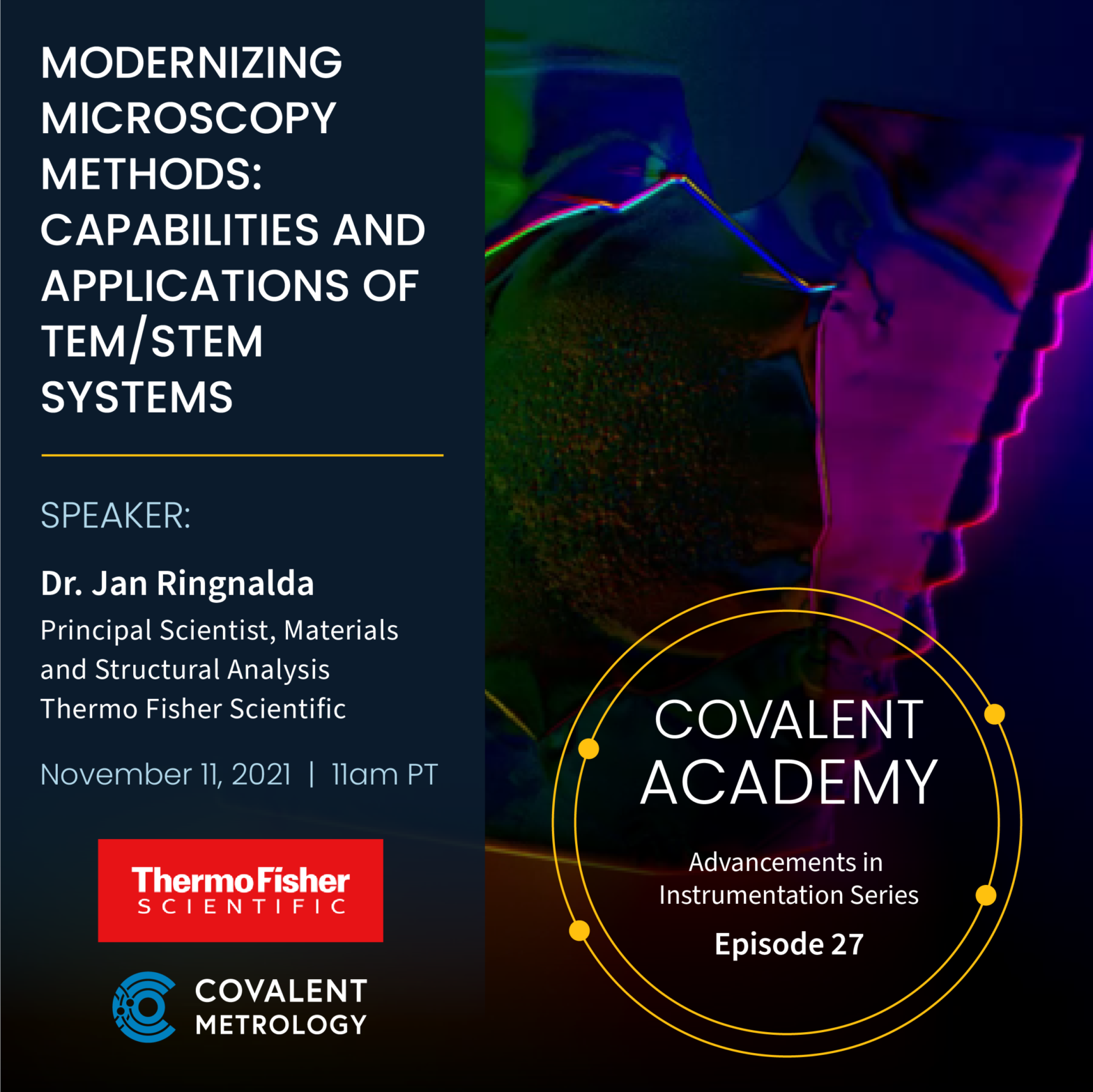Modernizing Microscopy Methods: Capabilities and Applications of TEM/STEM Systems
Modern (scanning) transmission electron microscopy (S/TEM) tools, like the Talos F200X system at Covalent, are outfitted with technologies that allow analysts to craft an optimum imaging session for the unique needs of each client project. In this webinar event, guest speaker Dr. Jan Ringnalda from Thermo Fisher Scientific will be exploring both basic and advanced analytical methods available on TEM systems. With real world examples, he’ll show you what’s possible and describe how you can optimize your experimental design to maximize the insight gained from TEM data.
This Webinar will Answer:
- What kind of analytical performance is a modern TEM instrument like the Talos capable of? What is its spatial resolution?
- How should I choose between Bright Field, Dark Field, and High-angle Annular Dark Field imaging methods? What are their advantages and applications?
- Why is HAADF commonly misunderstood, and how can I use it most effectively in my analysis?
- How should I incorporate energy dispersive spectroscopy (EDS) into my TEM analysis?
- What is selected area electron diffraction (SAED)? Why is it useful, and when do I need it?
TEM gives you more than just images
Unlike conventional light microscopy, transmission electron microscopy can produce images that capture phase information, composition, and even crystal lattice structure and orientation in solid samples. Oftentimes, clients may not realize the depth of insight that TEM can unlock, or may misunderstand the different S/TEM techniques used to probe these features in materials.
In this webinar event, we’re diving into the use cases, advantages, and fundamentals of operation in 5 main methods of imaging and analysis available on many modern-day S/TEM instruments:
- Bright-field (BF) TEM Imaging
- Dark-field (DF) TEM imaging
- High-angle annular dark-field (HAADF) STEM imaging
- Energy dispersive spectroscopy (EDS)
- Electron diffraction and selected-area electron diffraction (SAED)

About the Speakers

Dr. Jan Ringnalda
Jan got his PhD From Liverpool University in 1993, after which he took a postdoctoral researcher position at The Ohio State University. He has been involved with Transmission Electron Microscopy work since 1984, so brings over 35 years of experience to the table. His background includes failure analysis, materials characterization using EDS , EELS and imaging using TEM and STEM techniques. Jan was part of the product design group developing the Titan platform. In his present position with Thermo fisher Scientific, he provides technical sales support, presents scientific results at conferences and still participates in research with students at The Ohio State University; to make sure the systems fulfill the requirements of a State-of-the-art research lab.

About Covalent Metrology
Covalent Metrology is a disruptive analytical services laboratory and platform based in Sunnyvale, California. Its mission is to help companies who use advanced materials to get better data and insights more easily and affordably to facilitate faster development and production. Covalent is dramatically changing the characterization and imaging landscape by combining transparent pricing, data platforms, and top-notch customer service with world-class scientists, state-of-art tools, and strategic partnerships.
Covalent now has over 500 customers in 30+ industries.
Learn more at: https://staging-covalentmetrologyproduction.kinsta.cloud

